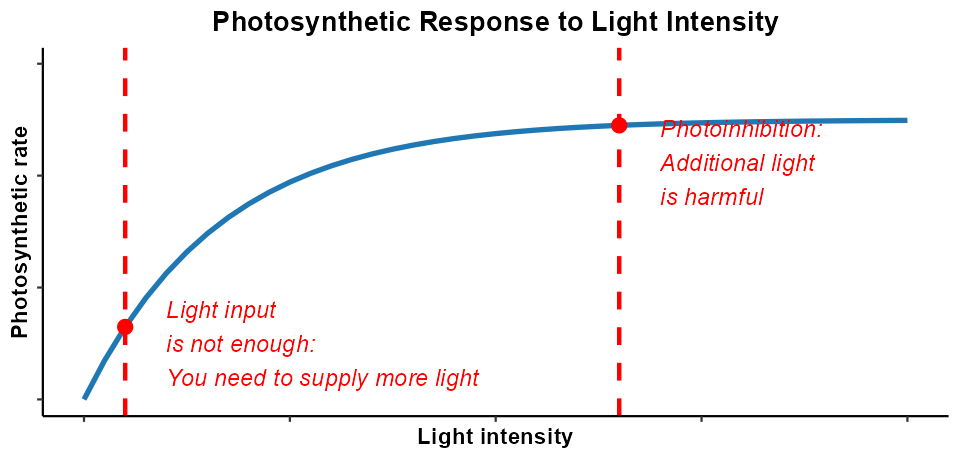Are Your Plants Fully Utilizing Their Photosynthetic Potential in CEA?
PHOTOSYNTHESIS
9/11/20242 min read


Key Takeaways for CEA Growers
In greenhouses, understanding your plants' light needs through light response curves helps balance the use of natural and artificial light while minimizing energy costs.
In vertical farms, the challenge is to optimize light and CO₂ levels to achieve maximum growth without wasting resources.
Regularly assessing your plants’ photosynthetic performance is key to ensuring they are reaching their full potential.
Controlled Environment Agriculture offers a unique opportunity to push the boundaries of crop productivity. However, unlocking this potential requires a deep understanding of your plants’ light and CO₂ requirements, which can be achieved through tools like light response curves.
Are your plants fully utilizing their photosynthetic potential? By focusing on efficient photosynthesis, you can ensure they are—and that your CEA operation is as productive and sustainable as possible.
Photosynthesis in CEA: A Balancing Act
CEA offers growers a significant advantage: control. By fine-tuning environmental conditions, growers can create an ideal atmosphere for plants to thrive. However, this control also presents challenges. How can you ensure that your plants are receiving optimal light and CO₂ levels for growth without wasting energy?
Greenhouse Farming: Balancing Natural and Artificial Light
In greenhouses, the natural sunlight provides a free energy source, but it isn't always consistent. Growers need to supplement light when sunlight is insufficient while minimizing energy consumption to stay efficient and sustainable. At the same time, when sunlight is excessive, shading needs to be activated to prevent plant stress and photoinhibition, which can lead to reduced yields or even damage.
Understanding the light needs of your plants through light response curves can help solve this. These curves allow growers to assess how much light a plant needs to achieve optimal photosynthesis without reaching saturation, where additional light won’t increase productivity but instead wastes energy.
For example, a typical light curve shows how photosynthesis increases with light intensity up to a point, after which additional light becomes counterproductive. Knowing this threshold helps growers determine when to supplement artificial lighting and when to apply shading.
Vertical Farming: Light and CO₂ Optimization
In vertical farming, where sunlight is absent, artificial lighting is the sole source of light. The challenge here is to provide the minimum amount of light needed for maximum photosynthesis while maintaining energy efficiency. But it’s not just about light—CO₂ concentration also plays a crucial role.
By carefully adjusting light intensity and CO₂ levels in tandem, growers can push plants to operate at their photosynthetic peak. However, achieving this balance requires precise monitoring and control to avoid wasted energy or suboptimal plant performance.
Maximizing Crop Yield Through Efficient Photosynthesis
Whether in a greenhouse or a vertical farm, the goal is the same: maximize crop yield while using the least amount of resources possible. By tracking your plants’ photosynthetic response, you can ensure they are receiving the optimal amount of light and CO₂ for growth. This not only boosts productivity but also reduces energy consumption—critical in today’s drive for sustainability.
